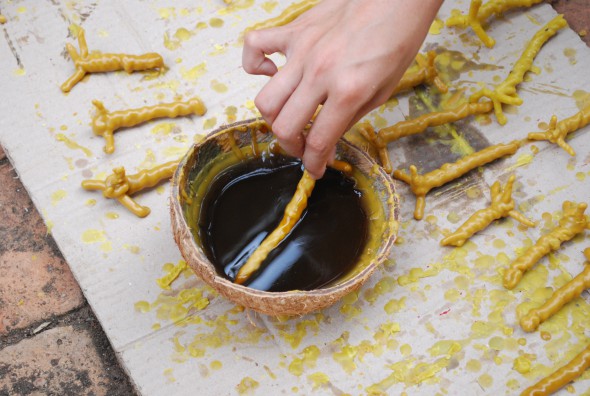The 2010 Intangible Cultural Heritage and Museums Field School

Making floating candles at the Urban Lamphun Community Museum. 2009.
I have just returned from my second summer of teaching in the Sirindhorn Anthropology Centre and UNESCO Bangkok’s Intangible Cultural Heritage and Museums Field School in Lamphun, northern Thailand. This field school brings heritage scholars and students from North America, Europe, and Mekong Delta region countries–Thailand, China, Vietnam, Cambodia, Laos, Bhutan, and this year also Indonesia–to learn about the possibilities and challenges associated with the safeguarding of intangible forms of heritage and the implementation of the 2003 UNESCO Convention on the Safeguarding of the Intangible Cultural Heritage. The field school has been an amazing opportunity to learn about the heritage-oriented challenges and community-based museum work in the Mekong Delta region. It has also been an opportunity to reflect on my work with First Nations communities in Canada. My sincere thanks to Dr. Alex Denes, Dr. Paritta Chalermpow Koanantakool and the staff of the Sirindhorn Anthropology Center for inviting me to participate in this amazingly well organized and considered field school.
The field school is structured so that over two weeks, each morning is spent learning about the 2003 Convention, topics in new museology, research methods, and looking at case studies, and then each afternoon is spent in the field with a local museum or heritage organization to support their safeguarding of an element of “intangible heritage”. My lectures focused on my applied visual and media anthropology research on the tensions associated with the transformation of cultural expression into digital media. Issues that I was exploring in the context of First Nations communities in British Columbia turned out also to be of concern for community museums and heritage practitioners in southeast asia.
In 2009 I was excited to work with a field school team at the Urban Lamphun Museum, a primarily youth-curated community museum that mobilizes intergenerational members of the community to revitalize and find new ways to transmit intangible cultural heritage (read more about them in this Bangkok Post article). I am a serious fan of their vintage vespa club and wish them luck on their upcoming ride to Laos! I am also blown away by the social media network they are using to organize more than 700 youth members to participate in heritage projects and museum social activities. I can’t wait to visit them again (maybe with a future graduate student!?).
This year I was also thrilled to work with students at Wat Pratupa, a Buddhist monastery at the centre of the Pratupa community in Lamphun. Our group worked directly with Assistant Abbott Phra Patiphan Puriphanyo, who organized an amazing group of community educators and cultural practitioners to help our field work group learn about the challenges they face in maintaining the Kap Kalong, an important oral and song tradition that is integrally tied to the Salak Yorm festival. As with the Urban Lamphun Museum’s use of media to facilitate community heritage activities, the Assistant Abbott at Pratupa has created a fantastic website that documents the activities of the Wat Pratupa community and communicates their distinct traditions and identity to a local, national, and international audience. You can see images from our field work sessions on the Wat Pratupa home page, as well as many of their recent projects and initiatives. In the future I hope to be able to work with the Assistant Abbott to make his website even better suit his goals for sharing (and protecting) the work and traditions of his community.
Here are a few of my photographs from the field school.
